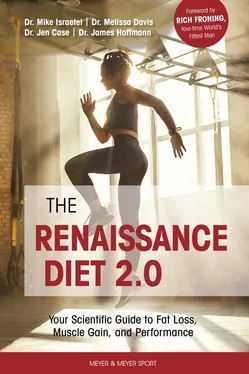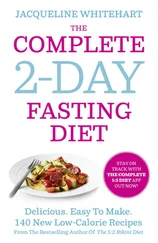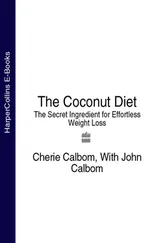
Protein sources vary across three main food composition aspects: digestibility, protein quality, and to a lesser extent the presence of other micronutrients.
Protein Source Digestibility
Protein sources can be ranked by their digestibility. Digestibility refers to how much of ingested protein is absorbed and utilized by the body. Animal protein sources tend to be among the best digested protein sources. Dairy, eggs, and isolated protein powders tend to be the most completely digested protein sources. After these, meat and soy products are a close second.
On average, plant-sourced protein is much less efficiently digested in part due to cellulose–a component of plant cell walls that cannot be broken down by the human gut. Processed plant protein sources can be healthier than non-processed whole food options because of this; the processing of plant protein can break down cellulose and make the amino acid contents more accessible. Some exceptions are mycoprotein (a fungus-based protein) and nutritional yeast. Because fungus and yeast do not contain cellulose, they are much better digested and absorbed.
Sources of protein can also be ranked based on the types and ratios of amino acids they provide. A food source containing all the essential amino acids is termed complete . Sometimes, particularly in the case of vegan diets, two or more protein sources are needed to get all the essential amino acids in adequate amounts. Multiple protein sources that together contain all essential amino acids are called complementary . While all animal sources are complete, most plant sources are not. Consumption of complete protein at every meal is not likely to have a large effect on health so long as the needed amino acids are consumed on average in the appropriate daily amounts. For body composition and performance concerns, however, getting enough of all essential amino acids at every meal is valuable and recommended for best muscle growth or retention.
Protein Digestibility-Corrected Amino Acid Score (PDCAAS) is the gold standard for evaluating the quality of a protein source. This method takes into account both the essential amino acid content and the digestibility of the protein. A score of 1 is the highest possible score and means that the protein source contains all the essential amino acids and can be fully digested such that all of the amino acids can be absorbed when that source is eaten. Quality of protein decreases with PDCAA score down to 0. A food with a score of 0 would provide no accessible essential amino acids. Table 5.1is a list of some protein sources and their PDCAA scores.
Table 5.1 A list of some example protein sources and their PDCAA scores
| Protein Digestibility-Corrected Amino Acid Scores (PDCAAS) |
| Milk proteins (casein, whey) |
1.00 |
| Egg protein |
1.00 |
| Soy protein isolate |
0.99 |
| Mycoprotein (fungus-based vegan protein) |
0.99 |
| Beef |
0.92 |
| Chickpeas |
0.78 |
| Black beans |
0.75 |
| Peanuts |
0.52 |
| Rice |
0.50 |
| Whole wheat |
0.42 |
| Wheat gluten |
0.25 |
Protein Source Micronutrient Density
Vitamins, minerals, and fiber are known as micronutrients because they are required by the body, but in only very small amounts (usually measured in milligrams) relative to macronutrients (usually measured in grams) for body composition, performance, and health. Phytochemicals are biologically active compounds found in plants, and although they are not essential to health or performance, evidence suggests that some types might improve both by a small amount. In addition to providing high-quality protein, animal products are also rich in a number of vitamins and minerals which plants tend to lack or have in much smaller quantities. Examples include some of the B vitamins (in particular B12) and iron. In contrast, although plant-based protein sources are often lower quality and harder to digest, they tend to be higher in fiber and phytochemicals and lower in less healthy classes of fats.
Two primary factors determine the quality of a carbohydrate source: its digestion time and its nutrient density.
Carbohydrate Source Digestion Time and the Glycemic Index
The glycemic index measures how quickly a source of carbohydrate is digested and absorbed into the bloodstream. Glycemic indices can be determined in a lab setting by measuring the blood sugar concentrations of study participants over hours after having consumed a particular carb source; values are ranked on a scale of 0 (lowest) to 100 (highest). Quickly digested carbohydrate sources cause a rapid spike in blood sugar resulting in a high glycemic index value. Slowly digested carbohydrate sources cause more gradual and sustained elevations in blood sugar and therefore have lower glycemic indices. Table 5.2lists some example glycemic index values.
Table 5.2 A list of some example carbohydrate sources and their glycemic index values .
| Glycemic Index Values |
| Pure dextrose (glucose) powder |
100 |
| Gatorade |
90 |
| Plain white potato (average of all cooking methods) |
85 |
| Cocoa Puffs cereal |
75 |
| White bagel |
70 |
| White rice |
65 |
| Sweet potato |
60 |
| Quinoa |
55 |
| Oatmeal |
55 |
| Whole-grain bread |
50 |
| Brown rice |
50 |
| All-Bran cereal |
45 |
| Pasta (higher glycemic index the longer you boil it) |
30-50 |
| Oranges, peaches, pears, apples, carrots |
40 |
| Kidney beans |
35 |
| Skim milk and low-fat yogurt |
30 |
| Grapefruit |
25 |
| Soybeans, chickpeas |
15 |
| Hummus dip |
5 |
| Pure insoluble fiber |
0 |
Processed carbohydrate sources often have a higher glycemic index value compared to whole food counterparts because the processing of food can break it down, making it more quickly and easily digested. On the other hand, glycemic index values are lower in the presence of fat, protein, or fiber, which can slow digestion. For this reason, hummus, the processed version of chickpeas with added fats, has a lower glycemic index than chickpeas themselves. It is also important to note that eating other food sources along with a particular carbohydrate source can effectively alter its glycemic index by slowing digestion. Glycemic index values affect nutritional recommendations for body composition and performance in several ways, as detailed in the following.
Pre-training or pre-competition meals should ideally digest quickly enough to prevent gastrointestinal distress and be able to restock muscle glycogen in time to support the activity. In addition, a good pre-training or pre-competition meal should provide a stable stream of blood glucose throughout the activity. Types of carb sources that are ideal for pre-training depend on the timing of the meal. The further from training onset the meal is eaten, the lower its glycemic index should be. A sugary sport drink can be a great pre-training meal if it is consumed 30 minutes prior to training or competing–sports drinks have a very high glycemic index, no fat or fiber, and their liquid consistency allows them to be digested quickly. If the meal is eaten much earlier, a slower-digesting whole food meal like a turkey sandwich on whole-grain bread is a better option. The pre-training meal should always contain enough carbs for basic function in addition to carbs for training. A pre-training meal eaten further in advance of training requires more total carbs than a meal eaten immediately before training to support basic function in the hours before training along with energy for the training itself.
Читать дальше













